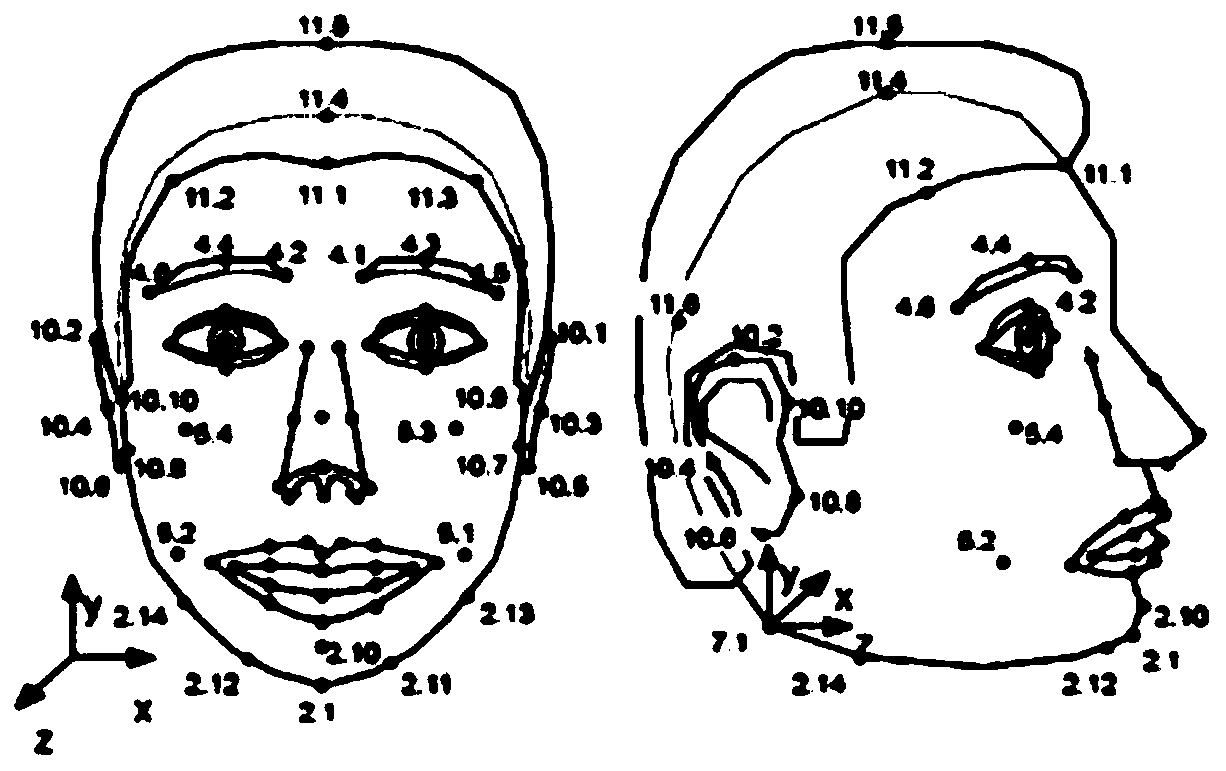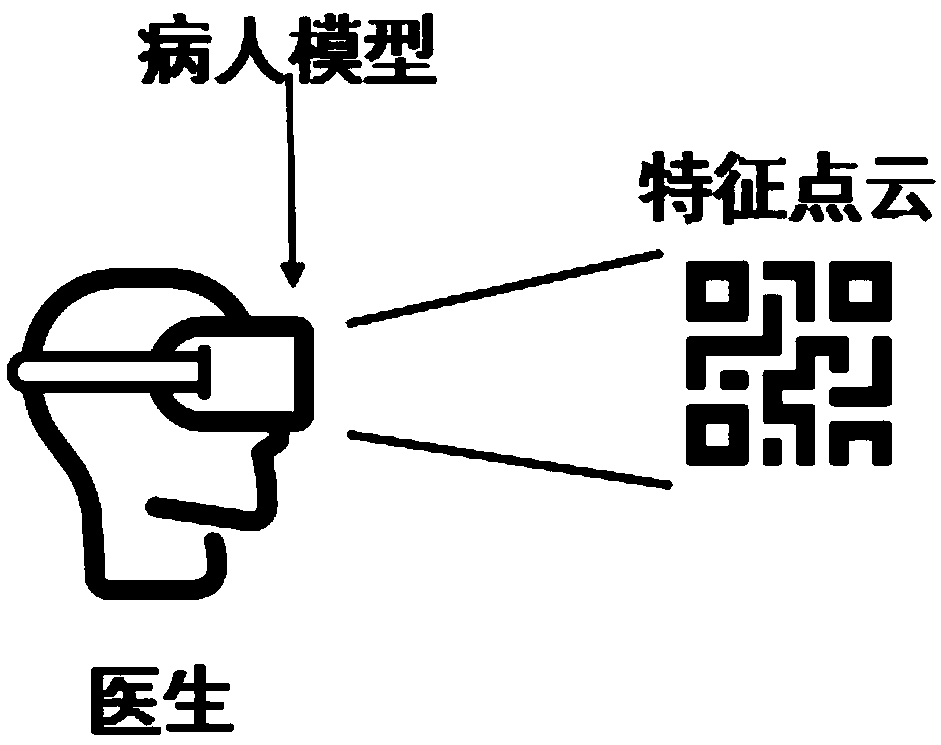Application method of hybrid reality-based auxiliary diagnosis and treatment system in neurosurgery
A mixed reality and neurosurgery technology, applied in the field of image recognition and medical image processing, can solve the problems of normal tissue trauma and low accuracy, and achieve the effect of reducing surgical risks, reducing doctor-patient disputes, good business prospects and value
- Summary
- Abstract
- Description
- Claims
- Application Information
AI Technical Summary
Problems solved by technology
Method used
Image
Examples
Embodiment 1
[0051] A method for extracting facial image feature point data comprises:
[0052] Step 1. Use 90 feature points to locate the face. The feature points are distributed as follows: 18 points mark the mouth, 14 points mark the jaw, 12 points mark the eyes, 6 points mark the eyebrows, and 4 points mark the cheeks and gills 10 dots mark the nose, 4 dots mark the nape of the neck, 10 dots mark the ears, and 12 dots mark the hair. Such as figure 1 shown.
[0053] Step 2: Establish a Cartesian coordinate system, draw up any origin, record the coordinate information of feature points, and construct point cloud data. The point cloud data is a coordinate array with 90 rows and 3 columns, and the distribution of the 3 columns corresponds to the x, y, and z coordinate values, and each row represents a different feature point.
[0054] Step 3: Convert the point cloud data into a QR code for storage, which is convenient for mixed reality devices to scan and identify.
Embodiment 2
[0056] A feature point positioning method based on mixed reality, comprising:
[0057] Step 1. The doctor wears the mixed reality device, scans the QR code with the patient's characteristics, and obtains the characteristic point cloud model. The process is as follows: image 3 shown.
[0058] Step 2: Name the patient feature point cloud as p, and the model point cloud as q. The center of gravity of the point cloud is calculated by the following formula:
[0059]
[0060]
[0061] Use the obtained point cloud center of gravity to construct the covariance matrix:
[0062]
[0063] Step 3. Next, enter the ICP algorithm for model registration. The function of ICP is to match two data sets with different numbers. Then the application of ICP needs to use the covariance matrix to construct a 4×4 symmetric matrix:
[0064]
[0065] Among them, the largest eigenvector through this symmetric matrix can be used to calculate the rotation parameters, and then find the R and T ...
Embodiment 3
[0069] This embodiment illustrates the technical solution of the present invention for the process of providing navigation assistance for brain tumor patients.
[0070] Step 1. To mark the brain tumor on the model, and then upload the picture to the mixed reality device.
[0071] Step two, such as Figure 6 As shown, the doctor operates the pointer, that is, the direction of the line of sight of the mixed reality glasses, and the system detects the center of the mark, and determines the position of the opening through two points and one line.
[0072] Step 3. The size of the opening is tangent to the direction of the opening. The extension line between the tangent and the tangent position of the marked tumor will intersect with the brain boundary. The distance between the intersections is the distance to be compensated; in order to prevent opening errors, the system calculates the actual opening distance through compensation calculations , the compensation distance is 1mm, su...
PUM
 Login to View More
Login to View More Abstract
Description
Claims
Application Information
 Login to View More
Login to View More - R&D
- Intellectual Property
- Life Sciences
- Materials
- Tech Scout
- Unparalleled Data Quality
- Higher Quality Content
- 60% Fewer Hallucinations
Browse by: Latest US Patents, China's latest patents, Technical Efficacy Thesaurus, Application Domain, Technology Topic, Popular Technical Reports.
© 2025 PatSnap. All rights reserved.Legal|Privacy policy|Modern Slavery Act Transparency Statement|Sitemap|About US| Contact US: help@patsnap.com



